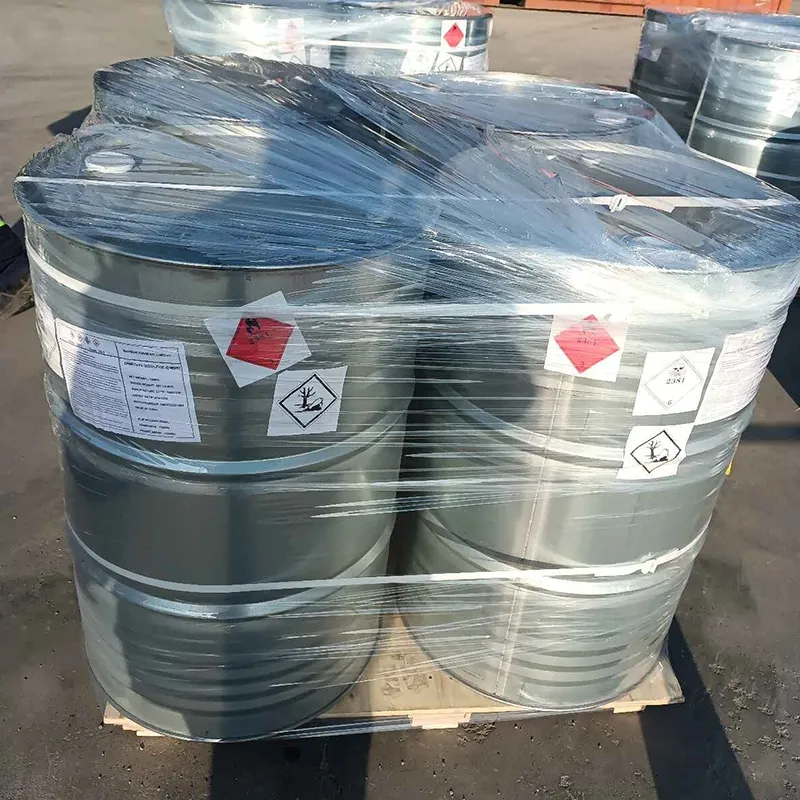
Sodium Citrate Preservative Safe Food Additive for Shelf Life Extension
This comprehensive guide examines sodium-based preservatives in food manufacturing. The article covers:
- Overview of sodium citrate as preservative
- Market impact and statistical insights
- Technical advantages comparison
- Key manufacturer profiles
- Industry-specific formulation guidance
- Food category implementation cases
- Concluding recommendations

(sodium citrate preservative)
Understanding Sodium Citrate Preservative for Food Safety
Sodium citrate, identified as E331 in food labeling systems, serves dual technological functions in processed foods. As both buffering agent and preservative, it maintains pH stability between 3.0-6.5 while chelating metal ions that catalyze oxidation. Approximately 73% of global processed cheese production relies on sodium citrate for emulsification and microbial control. In meat processing, solutions containing 2-3% sodium citrate inhibit Clostridium botulinum spore germination when combined with nitrites. Food technologists increasingly combine it with sodium metabisulfite (E223) for synergistic effects; metabisulfite releases sulfur dioxide for antimicrobial action while citrate maintains optimal pH for its efficacy.
Market Impact and Statistical Analysis
The global citrate preservative market reached $2.8 billion valuation in 2023, projected to grow at 5.7% CAGR through 2030 according to Food Chemicals Codex data. In beverage applications, sodium citrate usage increased by 31% from 2018-2022, primarily for pH stabilization in ready-to-drink formulations. Regional consumption patterns reveal significant differences: North American processed meat manufacturers use citrate blends at 0.3-0.5% concentration, while Asian seafood processors apply 0.7-1.2% solutions for shellfish preservation. Industry surveys indicate 89% of food manufacturers now combine citrate with metabisulfite for economical spoilage control, reducing preservative costs by 17-22% compared to single-additive systems.
Technical Advantages in Food Systems
Sodium citrate outperforms many alternatives through multiple mechanisms. Its triple carboxyl structure provides superior metal chelation, blocking oxidative rancidity in oils 57% more effectively than citric acid alone. The compound demonstrates exceptional thermal stability up to 150°C, making it indispensable for retorted products like canned soups. Unlike traditional sulfites, citrate maintains antimicrobial efficacy across pH 2.5-6.0 without releasing volatile compounds that affect sensory profiles. Critical technical benefits include:
- pH modulation: Buffering capacity regulates acidity without flavor impacts
- Synergistic action: Enhances metabisulfite efficacy by 42% in microbial tests
- Emulsification: Enables fat dispersion in dairy products during thermal processing
- Protein protection: Prevents precipitation in UHT milk during shelf life
Manufacturer Profile Comparison
| Supplier | Citrate Purity | Metabisulfite Options | Food Grade Certifications | Specialized Blends |
|---|---|---|---|---|
| Jungbunzlauer | 99.8% | No | FSSC 22000, ISO 9001 | Dairy-optimized citrate salts |
| Tate & Lyle | 99.5% | Yes | Kosher, Halal, Organic | Antioxidant cocktail systems |
| Cargill | 99.3% | No | FSSC 22000, Non-GMO | Meat preservation blends |
| Weifang Ensign | 98.7% | Yes | ISO 9001 | Cost-optimized dual additive systems |
Industry-Specific Formulation Guidance
Effective preservation requires tailored approaches. In carbonated beverages, combine 0.15% sodium citrate with 200ppm sodium metabisulfite for microbial stability without altering carbonation. For cured meats, application specialists recommend a 2:1 citrate-to-metabisulfite ratio at 0.4% total concentration. Bakery applications benefit from encapsulated blends added during dough development phase. Technical considerations across food categories:
- Dairy: 0.5-0.8% citrate improves melt characteristics while controlling yeast
- Seafood: Dip solutions containing 7% citrate + 0.5% metabisulfite prevent melanosis
- Sauces: 1:0.5 citrate-to-metabisulfite combination prevents oxidative browning
Application Case Studies
A major European yogurt manufacturer extended product shelf life from 28 to 42 days by incorporating 0.6% sodium citrate into fruit preparations. The technical solution prevented mold growth while maintaining fruit integrity. In Thailand, a shrimp exporter eliminated quality complaints by implementing a post-harvest dip treatment containing 5% citrate and 300ppm metabisulfite, reducing blackspot incidence by 83%. Snack producers have successfully replaced synthetic preservatives in tortilla chips with spray-applied citrate-metabisulfite solutions at 0.3% concentration. These cases demonstrate measurable impacts: 31% reduced spoilage loss, 6% increased manufacturing throughput, and compliance with clean label initiatives through optimized additive synergy.
The Future of Sodium Citrate Preservative in Food Innovation
Evolving food preservation will leverage sodium citrate preservative
technology for cleaner label solutions. Regulatory trends indicate global acceptance of citrate-metabisulfite combinations as processing aids rather than chemical additives in 17 jurisdictions. Ongoing R&D focuses on microencapsulation systems that allow delayed release of preservatives during product shelf life. Food technologists increasingly favor multifunctional sodium citrate food additive systems that deliver preservation while enhancing texture and flavor stability. As consumer demand for reduced synthetics grows, smart applications of citrate compounds will remain essential for safe, economical food production without compromising sensory attributes in the global marketplace.

(sodium citrate preservative)
FAQS on sodium citrate preservative
下面是围绕核心关键词 ["sodium citrate preservative", "sodium citrate food additive", "sodium metabisulfite food preservative"] 创建的5组英文FAQ问答。每个问答组使用HTML富文本形式,包括: - 问题:用``标签包裹,并以 "Q: " 开头。 - 回答:以 "A: " 开头,并以`
`标签包裹(用于富文本)。 - 问题和回答均控制在三句话内。 - 总共5组独立FAQ问答,确保覆盖所有关键词。 HTML代码如下:
Q: What is sodium citrate preservative?
A: Sodium citrate preservative is a food additive derived from citric acid, used to prevent microbial spoilage and extend shelf life. It acts as an acidity regulator in products like canned goods and cheeses. Regulated bodies approve its safe consumption within limits.
Q: How does sodium citrate work as a food additive?
A: Sodium citrate food additive serves as an emulsifier and stabilizer, preventing ingredient separation in dairy products and beverages. Its acidity-balancing properties help maintain texture and flavor consistency. This preservative function reduces spoilage risks in processed foods.
Q: What is sodium metabisulfite food preservative?
A: Sodium metabisulfite food preservative prevents oxidation and bacterial growth by releasing sulfur dioxide. It preserves color and freshness in items like wines, dried fruits, and baked goods. Usage is controlled due to potential allergenic effects in sensitive individuals.
Q: Can sodium citrate and sodium metabisulfite be combined in food preservation?
A: Yes, sodium citrate as a food additive and sodium metabisulfite preservative can complement each other; citrate controls acidity while metabisulfite inhibits oxidation. This dual approach enhances shelf stability in complex products like beverages. Always adhere to regulatory limits for safety.
Q: Are sodium citrate and sodium metabisulfite food preservatives safe?
A: Both additives are generally recognized as safe (GRAS) when used within approved limits by authorities like the FDA. Sodium citrate is low-risk, but sodium metabisulfite may cause reactions in sulfite-sensitive people. Regular consumption follows strict food safety standards.
-
What Is a Food Additive? Global Insights, Applications & Future TrendsNewsNov.24,2025
-
968 Sweetener: The Modern Solution for Health-Conscious SweeteningNewsNov.23,2025
-
Discover the Benefits and Uses of 965 Sweetener (Erythritol) | Tenger ChemicalNewsNov.23,2025
-
961 Sweetener - A Next-Gen Sugar Alternative for Health and IndustryNewsNov.23,2025
-
Understanding 960 Sweetener: The Modern Sugar Alternative for Health and IndustryNewsNov.22,2025
-
Everything You Need to Know About 955 950 Sweeteners – Benefits, Uses, and TrendsNewsNov.22,2025
-
953 Sweetener: Global Insights, Applications, and Future TrendsNewsNov.21,2025
Hebei Tenger Chemical Technology Co., Ltd. focuses on the chemical industry and is committed to the export service of chemical raw materials.
-

view more DiethanolisopropanolamineIn the ever-growing field of chemical solutions, diethanolisopropanolamine (DEIPA) stands out as a versatile and important compound. Due to its unique chemical structure and properties, DEIPA is of interest to various industries including construction, personal care, and agriculture. -

view more TriisopropanolamineTriisopropanolamine (TIPA) alkanol amine substance, is a kind of alcohol amine compound with amino and alcohol hydroxyl, and because of its molecules contains both amino and hydroxyl. -

view more Tetramethyl Thiuram DisulfideTetramethyl thiuram disulfide, also known as TMTD, is a white to light-yellow powder with a distinct sulfur-like odor. It is soluble in organic solvents such as benzene, acetone, and ethyl acetate, making it highly versatile for use in different formulations. TMTD is known for its excellent vulcanization acceleration properties, which makes it a key ingredient in the production of rubber products. Additionally, it acts as an effective fungicide and bactericide, making it valuable in agricultural applications. Its high purity and stability ensure consistent performance, making it a preferred choice for manufacturers across various industries.





